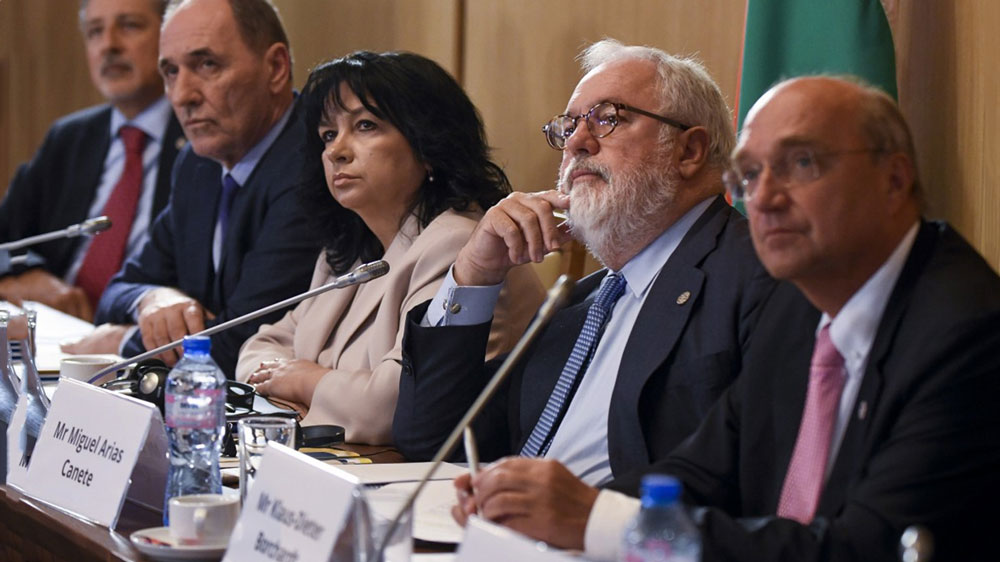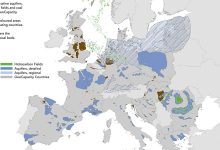Fifth CESEC meeting
Next steps towards enhanced regional cooperation
Commissioner for Climate Action and Energy Miguel Arias Cañete and Energy Ministers and representatives from 9 EU Member States and 8 Energy Community Contracting Parties participated in the fifth CESEC High Level Group Ministerial in Sofia on 29 June, and discussed the next steps of their enhanced regional cooperation in all energy-related matters. Cooperation under the Commission Initiative on Central and South-Eastern European Energy Connectivity (CESEC), launched in 2015, aims to strengthen solidarity and enable a safer energy supply for citizens and businesses across the region in the field of gas, electricity, renewables and energy efficiency.
The meeting witnessed the signature ceremony for the start of investment and works for the Greece-Bulgaria Interconnector. This infrastructure link, a CESEC priority project, will be an important contribution to a well-functioning gas market and will enhance security of gas supply in the entire region. When completed in 2020, it will bring additional sources of gas to the South-East European region, notably Caspian gas through the future Trans-Adriatic Pipeline and Liquefied Natural Gas from Greece. The Greece-Bulgaria Interconnector is a Project of Common Interest and has received EUR 85 million in EU funds to date.
“The high level political commitment we have witnessed today, for instance with the signature launching the start of construction works on the Bulgaria-Greece gas Interconnector, shows that the EU is serious about completing the energy infrastructure the region needs. Today’s meeting shows that we can cooperate very closely on issues of strategic importance and help the region seize the opportunities of the ongoing energy transition. Tapping into the potential of renewables and energy efficiency will not only promote competition and lower prices, but also decarbonise the region’s economies,” Commissioner for Climate Action and Energy Miguel Arias Cañete stated.
Symbolic ceremony for the start of construction works on BRUA
Participants also took part in a symbolic ceremony for the start of construction works on the Romanian section of the Bulgaria-Romania-Hungary-Austria (BRUA) transmission system project. During the meeting, Romania’s Energy Minister Anton Anton highlighted the need for each state involved in BRUA development to simultaneously carry out works for the creation of this gas infrastructure necessary for Central and South-Eastern Europe.
“I believe it is imperative for each country that will be transited by BRUA to advance in parallel with the construction of this gas pipeline. I think it’s in no one’s interest for things not to happen this way. Romania will comply with deadlines for BRUA and we will end the project in time. It’s a project that Romania is preparing extremely seriously and which is necessary not only for Romania, but also for the neighbouring countries. BRUA will make the connection between gas reserves in the Black Sea and all the states neighbouring Romania and, with its commissioning, there is a chance for other industries to develop,” Anton Anton underlined.
Also, Miguel Arias Cañete said BRUA represents the fundamental infrastructure for the interconnection of gas networks between the states participating in the project and reiterated support granted by the European Commission to the development of this gas pipeline.
“I am happy to see the excellent progress that Romania makes for the development of this pipeline. I congratulate all those contributing to BRUA development. Completion of this project will have huge benefits for all countries transited by it and therefore the European Commission supports this project. With BRUA, the security of gas supply will become real in this region, because this pipeline will allow reverse gas flows. I hope problems with Hungary will be solved, because it’s essential to successfully complete this project. I congratulate all those working at this project,” Commissioner Cañete mentioned.
Background
In 2014, the Commission’s ‘stress tests’ revealed a region extremely vulnerable to a cut in gas supply by its largest, and often sole, supplier. Moreover, consumers have historically paid significantly more for their gas in this region compared to Central Western Europe. To solve these problems, the Commission launched the CESEC Initiative in 2015, with the aim of guaranteeing that all countries in Central and South Eastern Europe (Austria, Bulgaria, Croatia, Greece, Hungary, Italy, Romania, Slovakia and Slovenia) have access to a more varied mix of energy sources, and are properly interconnected to the rest of Europe. CESEC has proven instrumental in the process of integrating the region’s gas markets and has thus become a central channel for further consolidation across the energy sector.
The CESEC ongoing priority gas projects are: The Trans-Adriatic Pipeline (gas pipeline from Greece to Italy via Albania and the Adriatic Sea); the Interconnector between Greece and Bulgaria; the Interconnector between Bulgaria and Serbia; the reinforcement of the Bulgarian transmission system; the reinforcement of the Romanian transmission system (part of the BRUA corridor); the LNG terminal in Krk, Croatia; and the LNG evacuation system towards Hungary. Other possible projects include: a connection of offshore Romanian gas to the Romanian grid and enhancement of the national system; a new Greek LNG terminal; and the interconnection between Croatia and Serbia.
In September 2017, meeting in Bucharest, Ministers signed a Memorandum of Understanding which extended CESEC cooperation to electricity markets, energy efficiency and renewable development.







